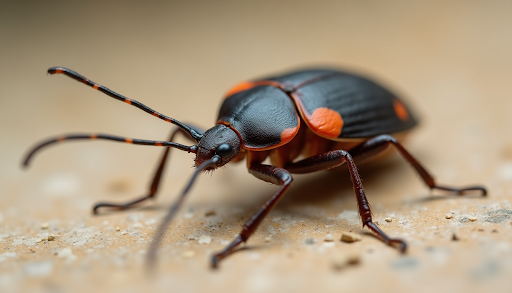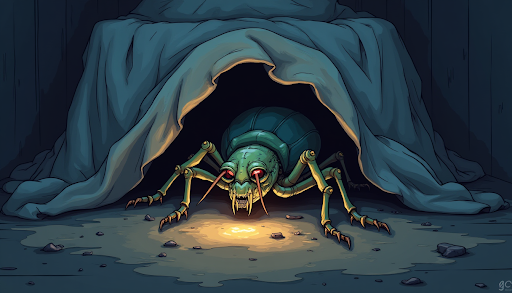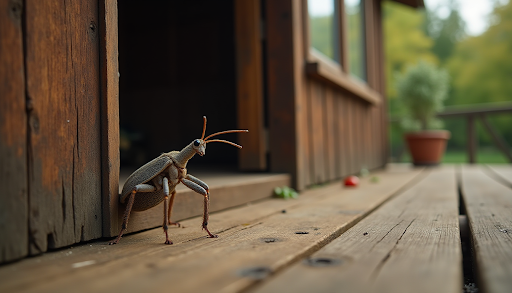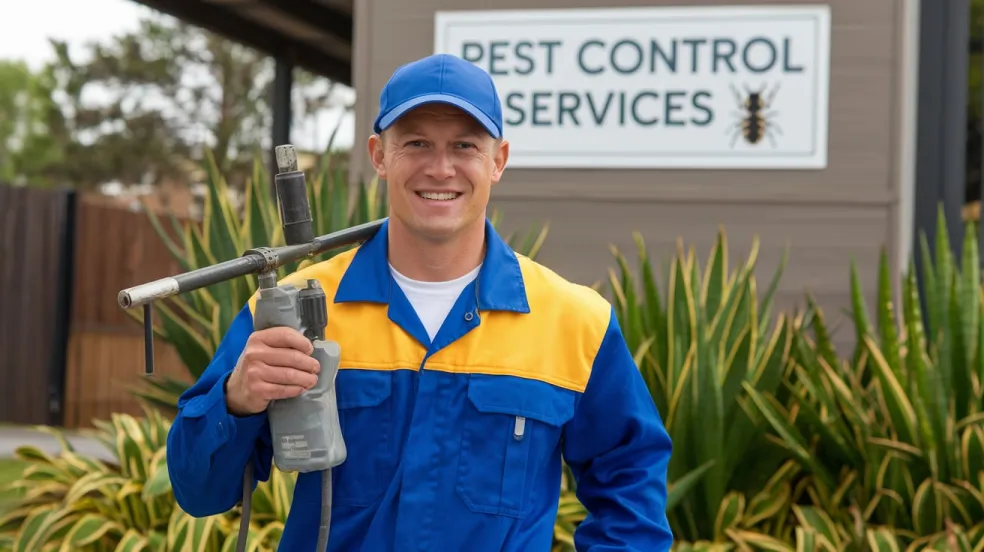Kissing Bug Disease in Texas: How to Prevent Kissing Bugs from Entering Your Home?

Kissing Bugs| Texas Beeline
The Centers for Disease Control notes that kissing bugs can carry parasites linked to Chagas disease, but even if you never face that risk, nobody wants to share a home with insects that tend to bite in the middle of the night. And because kissing bugs are nocturnal, you might not even realize they’ve been around until the signs start to show.
That’s why learning how to spot them—and more importantly, how to keep them out—is so important for Texas homeowners.
What Makes Kissing Bugs a Threat?

The Kissing Bug Threat | Texas Beeline
- Hide in cracks and crevices around windows and walls.
- Tend to bite pets and people quietly at night.
- Travel between the outdoors and indoors, unlike bed bugs.
- Leave droppings that can contaminate surfaces.
A single bite wound may not seem alarming, but ignoring the problem can lead to a growing kissing bug infestation.
Kissing Bugs: An Emerging Pest Problem in Texas

Kissing Bugs in Texas | Texas Beeline
Kissing bugs are typically spotted near dog kennels, sheds, or woodpiles close to the home. They are attracted to warmth, lights, and areas where pets sleep. Because kissing bugs are nocturnal and tend to bite silently, infestations can spread before homeowners even notice.
Unlike other pests, kissing bugs don’t stay confined indoors—they move between habitats. This makes DIY control less effective and highlights the need for professional pest management.
Strategies for Preventing Kissing Bug Infestation
Keeping your home safe requires both expert treatments and homeowner vigilance.

Home Prevention Steps | Texas Beeline
Homeowner Prevention Tips
Alongside professional help, try these steps:
- Seal cracks and crevices around doors, windows, and siding.
- Reduce outdoor lighting, since kissing bugs are attracted to it.
- Check areas where pets sleep for bug activity.
- Keep outdoor kennels away from the house.
- Trim shrubs, clear clutter, and remove woodpiles near the home.
- Use tight-fitting screens on all doors and windows.
These simple steps greatly reduce the risk of kissing bugs from entering your home.
Professional Pest Control Solutions
When home prevention fails, Texas Beeline can help you bar these bugs from entering your home. What we do:
- Thorough inspection to identify kissing bug entry points.
- Targeted treatments to eliminate pests and prevent their return.
- Ongoing pest control monitoring for long-term protection.
Our team specializes in prevention and control strategies designed for Texas homes.
Protect Your Home Today

Kissing Bugs Pest Control | Texas Beeline | Photo Source: Texas Beeline
Sightings of kissing bugs in homes are becoming more common in Texas and nearby states like Florida. While not every kissing bug carries disease, some are known carriers of Trypanosoma cruzi, the parasite that causes Chagas disease, and that’s something you should consider.
Don’t wait for a kissing bug infestation to take hold. Prevention is the best protection.
Remember: ignoring signs of bug activity only makes infestations harder to manage later.
Call Texas Beeline today! And rid your properties of kissing bugs and keep your family safe. For expert inspections and proven treatments to prevent kissing bug bites and keep pests out of your home.
FAQs About Kissing Bugs
Is kissing bug harmful?
Yes. Kissing bugs aren’t just a nuisance—their bites and droppings can spread serious health risks like Chagas disease. If you suspect these pests are around your home or pets, call Texas Beeline right away for a safe and thorough inspection.
What happens if you squish a kissing bug?
Squishing one won’t solve the problem. Even if you kill a bug, eggs and hidden insects may remain in your home. The best step is to schedule a professional pest control service with Texas Beeline to eliminate the entire infestation.
What kills kissing bugs?
Household sprays rarely work, and DIY treatments often fail to reach hidden eggs and nesting spots. Only professional-grade treatments are reliable for fully removing kissing bugs. Contact Texas Beeline to get proven solutions that protect your family.
Do kissing bugs stink?
Yes, kissing bugs can release a foul odor when threatened or disturbed. This smell alone is unpleasant, but the bigger concern is the health risk they pose.
When are kissing bugs most active?
Kissing bugs are nocturnal, which means they come out at night to feed. Their bites usually happen while people or pets are sleeping.
Where do kissing bugs lay eggs?
They prefer hidden areas such as cracks, crevices, wood piles, or even around pet kennels. This makes them hard to spot until an infestation grows. Protect your home and pets—schedule an inspection with Texas Beeline today.
How do I know if I have kissing bugs?
Look for insects with cone-shaped heads and striped orange or red markings along the edges of their bodies. Because they resemble other harmless bugs, it can be hard to tell on your own. If you’re unsure, Texas Beeline can provide a professional inspection.
Do kissing bugs make sounds?
No, kissing bugs are silent. They don’t buzz or chirp, which makes them even harder to detect until they’ve already bitten.
Do kissing bugs live in beds?
Not usually, but they tend to bite while people sleep, which can make it seem like they’re coming from your bed. They often hide in cracks near sleeping areas. Keep your nights safe by calling Texas Beeline for effective prevention and control.
What diseases do kissing bugs transmit?
Some kissing bugs carry a parasite that can cause Chagas disease, a serious illness that affects humans and pets. While not every bug is infected, it’s not worth the risk. Protect your household by scheduling a pest inspection with Texas Beeline.
Where are kissing bugs commonly found?
They’re most common in Texas, the southern United States, Central America, and Latin America. If you live in these areas, it’s especially important to stay alert.
What do kissing bugs look like?
They are dark-colored insects with distinctive orange or red markings along their sides and a cone-shaped head. Because they resemble other harmless bugs, proper identification is key. Call Texas Beeline for expert confirmation and treatment.
Are kissing bug bites painful or dangerous?
The bite itself may only feel like a mild sting, but the real danger lies in possible disease transmission. If you’ve been bitten, don’t wait—contact Texas Beeline for guidance and pest control solutions to keep your family safe.
How long do kissing bugs live and how many eggs do they lay?
Kissing bugs can live for one to two years and may lay hundreds of eggs during their lifespan. This means even a few bugs can quickly turn into a serious infestation.
